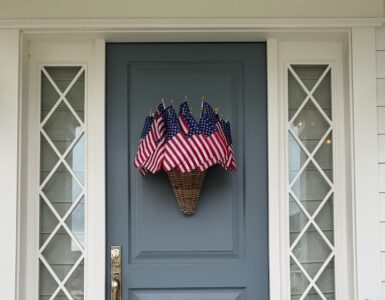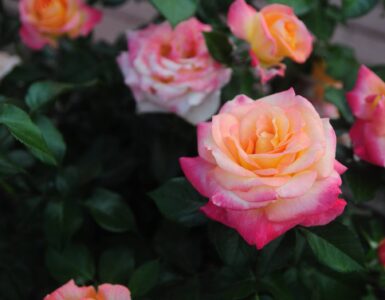Darin Engh, from Engh Gardens, shares some tips on luring in wildlife on a wing.
If you want to attract wildlife to your garden, the best-strategy is to imitate nature. Create a natural-looking ground plan and choose trees, shrubs, and other plants that offer food and shelter to birds and animals. Many plants preferred by wildlife are native species.
One of the main aims of a wildlife-friendly garden is to re-create some of the native habitats that have been lost from the countryside. Your garden will be more appealing to wildlife if you can incorporate a number of habitats, offering shade, shelter, water and food.
A small pond or water feature is probably the most important wildlife habitat you can include in your garden. A wildlife pond should be placed in an open, partly sunny spot. Include a shallow ledge as a platform to allow creatures to drink and bathe. Water attracts birds through every season, even in the worst winter storms. Put out birdbaths, shallow saucers of water, or a fountains with a trickle of water.
A mini woodland – Although few people if any would have the space to plant an entire forest, a carefully chosen tree can create the effect of a woodland edge.
A wildlife meadow – Plant in groups rather than as single specimens, because butterflies prefer to visit stands of brightly colored flowers.
Provide year-round food – try to design your garden so that it offers a more-or-less continuous succession of flowers to provide nectar and pollen throughout the year. You can help support migrating butterflies by planting perennials like gayfeather (Liatris spicata), and herbs like oregano, whose nectar-rich blooms often linger until the first frost.
Birds prefer these four types of plants when searching for the ideal place to nest and live. Evergreens provide cover, winter shelter, and summer nesting sites. Grasses provide cover for ground-nesting birds. Nectar-producing plants (especially red blossoms) attract hummingbirds and orioles. Fruiting trees and bushes attract dozens of species of birds for obvious and tasty reasons. Be sure to plant trees or bushes that bear fruit every season.
Birds can rid you garden of many unwanted pests. To attract numerous species of birds and promote a healthy, well-balanced garden, choose the seed-producing plants birds love:
- Black-eyed Susans
- Coneflowers
- Coreopsis
- Cosmos
- Millet
- Scabiosa
Berry-bearing shrubs and fruit trees:
- Barberry
- Blueberries
- Cotoneaster
- Crabapples
- Currants
- Dogwood
- Grapes
- Holly
- Pyracantha
- Roses
- Serviceberry
List of Wildlife-friendly Plants
This colorful group of easygoing late-spring and summer bloomers offers treats for all corners, including birds, butterflies and is a literal banquet for hummingbirds, as well as a feast for the gardener’s eyes. The garden’s feathered patrons will also feast on the fruits while the seed-eaters will appreciate the bounty of coreopsis, blanket flower, rudbeckia, and fountain grass. The shrubs all afford ample shelter, with the prickly spines producing shelter as well.
Achillea Yarrow
Drought-tolerant, hardy perennials that flower over a long period in summer and early autumn. The flat, platelike flowerheads provide a stable landing platform for butterflies and ladybugs.
Agastache Anise Hyssop
Versatile and long-flowering perennial, loved equally be insects and birds. These are a long-lasting, nectar-rich treat for bees and butterflies. Small, seed eating birds find the decorative seedheads irresistible, and they hold up well into the winter months.
Ajuga Bugleweed
Bugleweed is a dependable, evergreen, groundcover plant, perfect for covering bare earth at the front of the border. The small, leafy spires of dark blue flowers that emerge from the foliage in late spring to early summer are a valuable source of nectar for bees. Butterflies and ladybugs visit large swaths of flowering bugleweed.
Snapdragon
Loved by bees, butterflies and birds. Fragrant, tubular, two-lipped flowers perfect for landing of bees. Snapdragons play an important wildlife role because they produce copious quantities of seed, which provides food for many small songbirds.
Asclepias Butterfly Weed
Buddleja Butterfly Bush
Most important summer-flowering shrub for attracting butterflies. Produces honey-scented flower spikes on arching stems over a long period from midsummer.
Caryopteris Bluebeard
Small, woody shrub that is a late-season magnet for butterflies and bees. From late summer clusters of cobalt blue or lavender-blue are borne on upright stems of slender, aromatic, gray-green leaves. The blooms are a useful source of nectar and the seedheads provide food for small birds.
Cleome Spider Flower
Coreopsis Tickseed
Coreopsis is one of the best perennials for supporting a wide range of butterflies and beneficial pollinating insects. Produces a succession of cheerful, chrome-yellow, daisy-like flowers over a long period from late spring to midsummer. The ripening seedheads are a favorite food of finches and other small birds.
Cosmos
Nectar-rich annual. Large, open saucer-shaped flowers in shades of white, pink, or crimson, offer a perfectly designed landing pad for insects and convenient access to the nectar.
Cotoneaster
This large hardy, berry-bearing shrub is highly recommended for wildlife-friendly gardens. The dense tapestry of branches and small, lustrous, dark green leaves provides good nesting sites for small birds. In late spring and early summer the small, pinkish white or creamy-white flowers that are produced are popular with honey bees and bumblebees. In autumn, small jewel like berries develop, providing color and a source of food for birds in winter.
Digitalis Foxglove
Foxglove is particularly appealing to nectar-loving insects.
Echinacea Coneflower
The most successful late-blooming perennial for attracting butterflies and bees. Valuable source of nectar and flowerheads provide food for birds.
Heliotrope
Fragrant annual. Plants produce tightly packed spikes of tiny, tubular dark violet flowers. Flowers open gradually, providing a nonstop source of nectar for butterflies and bees.
Monarda Bee Balm
Petunia
Excellent tubular shaped flower for attracting hummingbirds.
Pyrancantha Firethorn
The dense, spiny branches of these hardy evergreen shrubs are good cover for nesting birds. In late spring and early summer small white hawthorn-like flowers are produced that are popular with nectar-loving insects. The long-lasting fruits that follow provide important winter food for songbirds.
Rudbeckia Black-eyed Susan
Produce a succession of golden-orange or yellow daisy-like flowers with cone shaped, blackish brown centers. An important late source of nectar and seeds for overwintering birds. Ultraviolet markings on the petals attract and guide insects to the center of the flower.
Sedum Stonecrop
Stonecrops are one of the best perennials for encouraging butterflies and bees. Succulent gray-green, upright stems are topped with flat heads of tiny, star-shaped pink flowers, offering a valuable late source of nectar.
Weigela
Excellent tubular shaped flower for hummingbirds.
For more information, you can visit Darin at Engh Gardens in Sandy or online at www.enghgardens.com.















Add comment